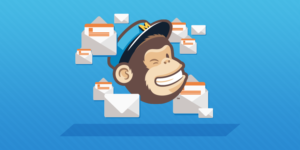Large corporations, multinationals, and small enterprises can all take their digital marketing strategy a notch higher by running well thought-out automation campaigns. Some of the top candidates for automation in the sales and marketing processes include email flows, mailing lists clustering and segmentation, lead management, and social media management among others.
While this may sound too complex to achieve for many especially those running start-ups and mid-sized businesses, the truth is that implementing automation doesn’t necessarily have to be a big hassle. All that’s needed is having the right tools and some skills to help make the entire process a breeze.
Are you looking to streamline your emailing process by automating how you communicate with your bulging mailing list? You could be in the luck as our today’s post focuses on how to leverage the power of emailing software and autoresponder tools to enhance the sales process. The particular tool we recommend here is MailChimp which is easily the most popular and the current market leader in this category.
Ready? Let’s dive straight in.
Lead scoring for more personalized emails
To increase chances of your emails being opened and converting, it’s important to ensure that the message inside them is highly targeted at its recipients.
So, how do you determine what is right for a particular readership?
By conducting a lead scoring exercise which groups audiences based on factors such as how close they’re to selecting a product, upgrading to a premium offer, or making an actual purchase. Put simply, lead scoring is a ranking mechanism that automatically qualifies your leads using a predefined criterion.
MailChimp has a powerful scoring system that’s based on individual demographics and behaviour. To implement your lead scoring model on this tool, go to your listing, click on settings, select list fields, and finally merge tags. Create a custom field that remains invisible to the visitors and save changes. From here, you can define a scoring model depending on your campaign specifics.
On the other hand, if you use a CRM like Pipedrive, you’ll be glad to know that you can sync your already sorted contacts using the CRM’s lead scoring function. This Pipedrive MailChimp Integration will particularly come handy in helping you filter out and sending targeted messages to certain users in just a few clicks.
Pre-filled personal information in form fields
Pre-populating user’s data on landing pages or other website forms can increase the chances of conversion. Instead of asking your users to type in personal data again, take advantage of automation by using MailChimp and other personalization engines like Leadpages to prefill web forms. All you need is to go to the MailChimp integrations directory and learn how to synchronize these tools. Luckily, it doesn’t require a lot of technical knowledge to understand how pre-filling data forms works; however, some HTML background would make everything a little easier.
Drip campaigns for lead nurturing
Drip campaigns are great for nurturing your leads especially when onboarding and educating new users. To improve these campaigns, consider adding some lead scoring, demographic, and behavioural triggers in your automation.
While using MailChimp, select the custom workflow setting and proceed choose the time you’d like to trigger a drip campaign. You can use the “subscriber joins list” for new customers. Alternatively, if you wish to nurture leads based on their scoring, click on “List field data” and select “Merge field value changes”. Finally, specify the score of the leads you’d like to nurture in the ‘lead score’ field. Voila. Your drip campaign is now ready for running.
Create viral loops and referral chains
Let’s face it, everyone loves emails with catchy subjects and great offers. In fact, very few of us would resist the temptation of opening emails that come with enticing subjects. Marketing engineers understand this concept, which is why you’ll find most of them planting viral loops and practical referral chains into emails as a strategy to expand their reach.
Take a look at this scenario – user “A” signs up for your email list. During registration, MailChimp stores their personal information. Moments later, the user receives an automated special welcome email that includes a relevant offer that they can obtain after inviting a colleague. Similarly, their referral receives an invitation with a captivating headline – something like “User A invited you to our awesome XXXXX. You cannot afford to miss this”
Ever wondered how marketers do this? Well, MailChimp and most other related email marketing tools make it quite easy to create such a campaign. For starters, you’ll need to compile a new list comprising your invited users. From here, create a simple landing page (specially designed for your referral campaign), and integrate the page with the newly created list. Include a web link that redirects user “A” to the referral-landing page. Once they’ve filled in and submitted the form, redirect them to the URL featuring the special offer.
Conclusion
So, there you have it – a compilation of four valuable hacks you can use to automate and enhance your email marketing campaign powered by MailChimp. Use them to reinvent your sales processes and generate increased leads for your business. With this knowledge also, you can integrate additional tools with MailChimp and create new automations for even more productive marketing campaigns.








